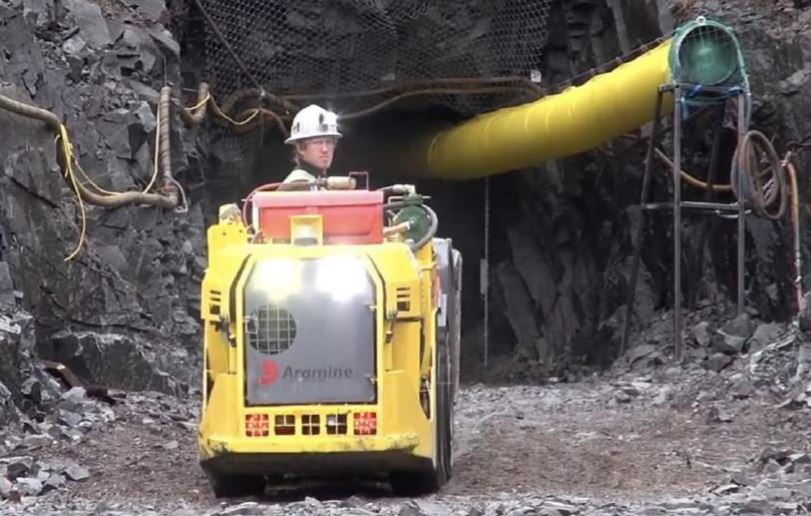Canada Cobalt moves to fund battery sector strategy

By Peter Kennedy
Canada Cobalt Works Inc. [CCW-TSXV; CCWOF-OTC; 4T9B-Frankfurt], a company that is positioning itself to become a vertically integrated North American leader in cobalt extraction and recovery, said Friday September 27 that it has arranged to raise $1 million from a private placement with strategic investors.
Canada Cobalt said the private placement consists of 2.85 million units priced at 35 cents per unit.
Each unit consists of one common share and one share purchase warrant good to buy one additional share at 55 cents per share for up to two years from the date of closing.
The expiry of the warrants may be accelerated if the closing price of Canada Cobalt shares is at least 75 cents for 10 consecutive trading days during the term of the warrant. The company may also accelerate the expiry of the warrants to 20 calendar days from the date of the written notice given to the warrant holder.
On Friday, the shares eased 1.6% or $0.005 to 30.5 cents and currently trade in a 52-week range of 25 cents and 70 cents.
Canada Cobalt Works aims to develop a number of business lines that include exploration and mining, production of cobalt-rich gravity concentrates and the sale of concentrates to battery cathode makers in Asia and Europe.
Another line of business may also involve the use of proprietary technology called Re-20X which is designed to efficiently extract cobalt from ore and produce cobalt sulphate to the specifications required by battery sector end users.
The Re-20X technology is currently being tested at SGS Lakefield Research Ltd. at Lakefield, Ont., to see if it works for extracting cobalt, lithium and other metals from used lithium-ion batteries.
Canada Cobalt Works is headed by President and CEO Frank Basa, a 60-year-old metallurgist, who worked for Agnico-Eagle Mines Ltd. [AEM-TSX, NYSE] during the 1980s.
The company’s key asset is a past-producing property known as the Castle Silver Mine, which is located near the northern Ontario community of Gowganda, 85 km north of the historic Cobalt Silver Mining Camp.
Records show that over 9.5 million ounces of silver and 299,847 pounds of cobalt were recovered from the Castle Mine. That includes the 3 million ounces produced by Agnico-Eagle before a collapse in the price of silver prompted Agnico-Eagle to abandon the operation in 1989.
It was Basa who developed the Re-20X process while he was employed by Agnico. But the technology was never commercialized because Agnico switched its attention to gold mining.
Basa has said potential customers in the battery manufacturing industry are looking for alternatives to the Democratic Republic of Congo, currently the source of 54% of the globe’s cobalt supply.
Now that it has picked up the cobalt properties that Agnico left behind, Basa believes his company is well ahead of competitors who are merely doing exploration drilling in the Cobalt Camp. Basa said Canada Cobalt Works is the only company in the region that can produce the type of cobalt sulphate that cathode manufacturers require.
“You have to give them the purity and grade that they are looking for,” he said.
Following the assembly of the 500 kilogram per day pilot plant, the company has been able to produce gravity concentrates on the Castle Mine site. One recent test showed grades of 9.25% cobalt, 5.65% nickel, 9,250 g/t silver and 49.9% arsenic.
It said this would allow for the scaling up of the Re-20X process at SGS Lakefield, which the company said can resolve a long-time issue in the Cobalt camp by removing 99% of the arsenic from concentrate containing nearly 50% arsenic, while achieving cobalt recovery rates of 99%.
Back in May 2019, Canada Cobalt Works said SGS took a gravity concentrate of a 120-kilogram sample from the Castle Mine’s historic tailings pond with a calculated head assay of 459 g/t silver and created a high purity flotation silver concentrate grading 18,486 grams per tonne (539.17 ounces per ton).
The aim is to produce a high purity direct shipping precious metal concentrate (silver and gold). The 20X process would be used to convert a cobalt concentrate into a cobalt sulphate.
Meanwhile, Global Energy Metals Corp. [GEMC-TSXV; GBLEF-OTCQB, 5GE1-FSE] recently gained the right to use the Re-20-X technology for a period of one year to accelerate the advancement of its Lovelock Cobalt Mine and Treasure Box projects in Nevada.
In return, Global agreed to pay Canada Cobalt Works $50,000 in cash and issue 2 million units at $0.075 for $150,000.
Aside from its ability to produce cobalt sulphate, Canada Cobalt Works is currently the only company in Cobalt Camp that has the permits to undertake underground exploration. This work is being conducted on the first underground level of the Castle Mine, which operated at various times between 1917 and 1989, producing silver and cobalt from the No. 3 shaft. Additional unspecified production also occurred between 1951 and 1966, material that came from the both the Castle No. 3 and Capitol shafts.
The company has said there is a strong likelihood that future cobalt mining economics will be enhanced by metal credits such as nickel, silver and others.
The company said underground drilling on the first level of the Castle Mine has continued to identify cobalt-silver-rich vein structures, occasionally also mineralized with gold and nickel.
The economics of mining cobalt may also be enhanced by a custom milling agreement with Canada Cobalt Works’ sister company Granada Gold Mines [GGM-TSXV], Basa has said. This may involve the processing of gold-bearing ore from the Granada gold mine near Rouyn-Noranda, Que., at a 600-tonne-per-day mill that Canada Cobalt Works hopes to install at the Castle Silver Mine.
